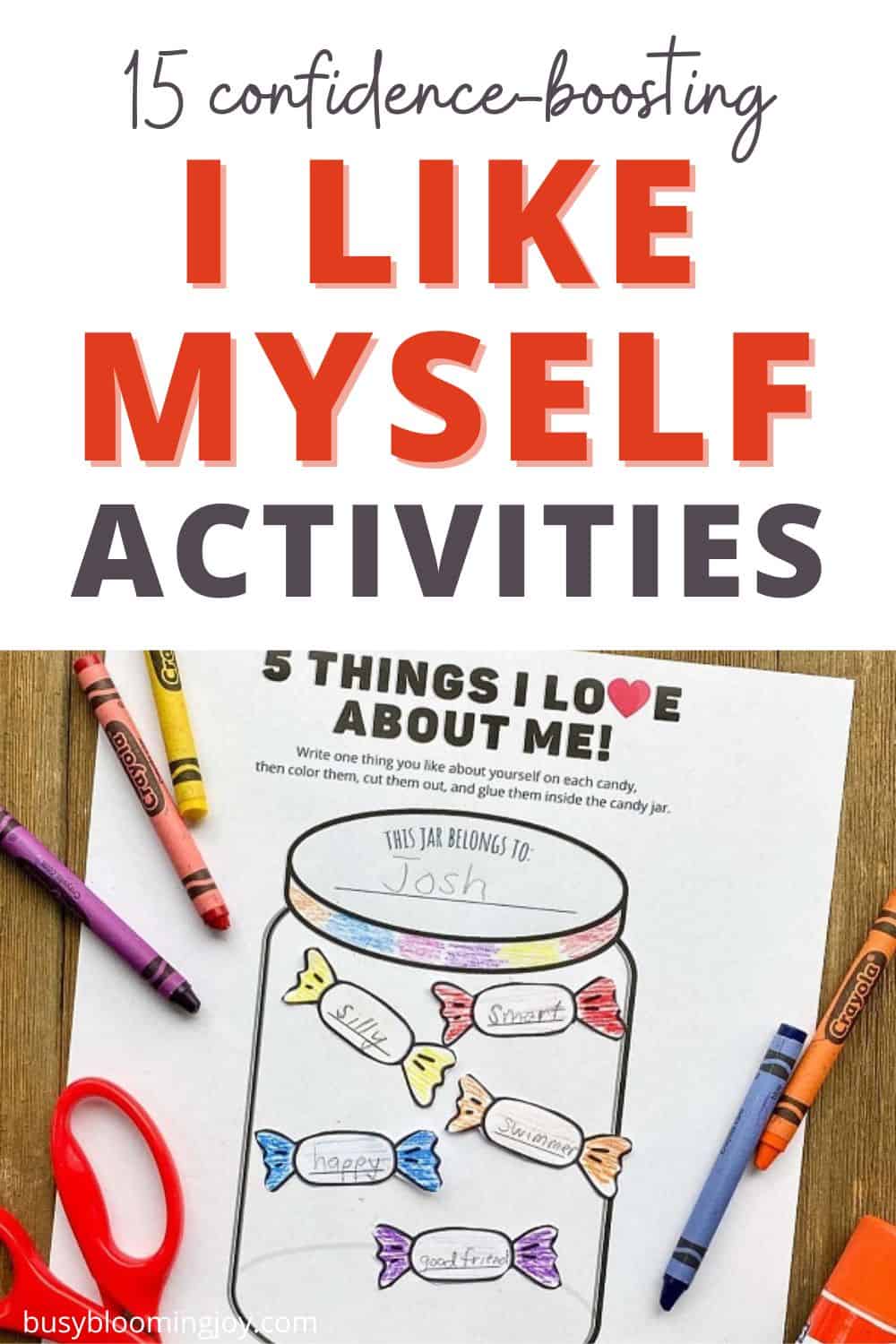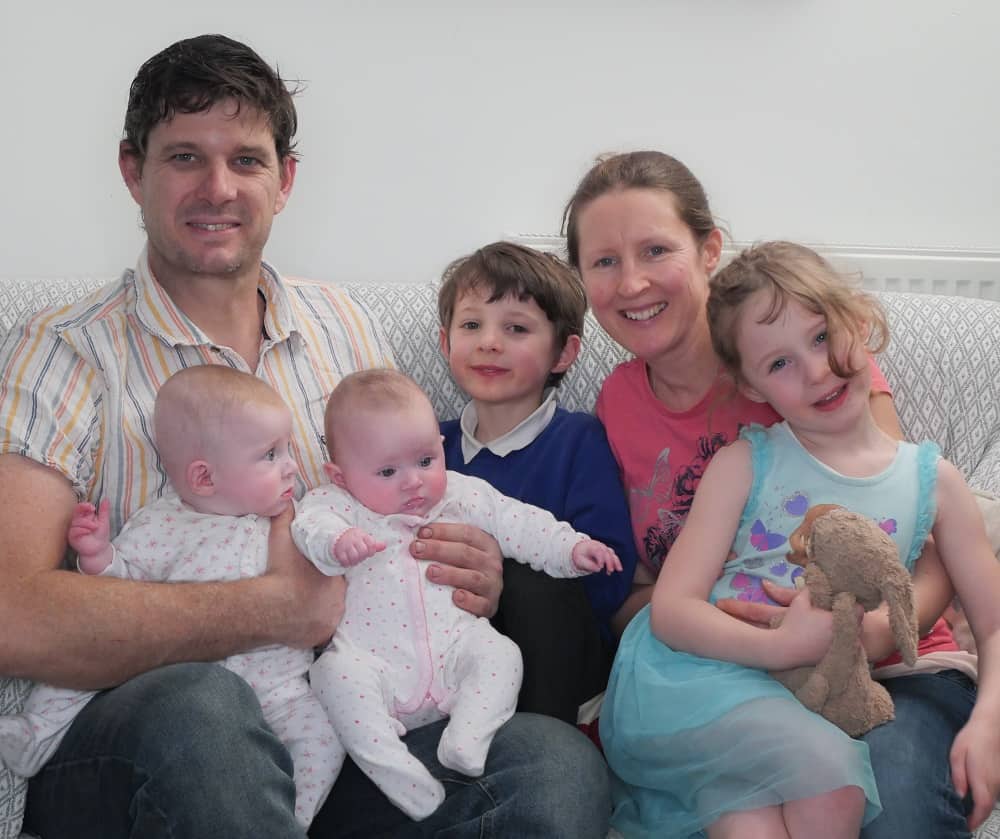Inside: learn how to hold a newborn with lots of different positions to try. You’ll also learn how to hold a newborn upright and the best positions for burping and to calm a fussy baby.
Holding a newborn baby can feel terrifying for first-time parents. They seem so fragile and precious that you don’t want to make a mistake. That is a perfectly normal feeling.
I found myself too afraid and embarrassed to ask the nurses how I should hold my newborn. Do you hold a baby upright or laying down in your arms? Would I hurt her if I made a mistake?
That’s why I wrote this post. If you are scared to hold a newborn and too embarrassed to ask like I was, this post will help you feel more confident in how to hold a newborn even if you have never held a baby before.
Table of Contents
ToggleWhat to do before you hold a newborn baby
Holding a newborn baby can be a peaceful, heartwarming experience. Still, if you feel unprepared or nervous, it can steal that feeling from you. But it isn’t as difficult as you think, and they are not as fragile as they seem. You can confidently learn how to hold a newborn baby without being stressed. Let me show you how.
Step 1: Wash hands & change clothes if necessary
Before you hold a newborn baby, make sure that you wash your hands and change out of any clothes that might have any kind of harmful chemical or pet hair or something that would be potentially itchy or scratchy against baby’s delicate skin.
In addition, refrain from putting on perfume, body spray, deodorant or strong aftershave if you know in advance your’re going to be holding a newborn (so if you’re learning how to hold your own newborn, stick to natural scented deodorants and nothing else. Newborns can be easily upset by strong odours and when very small, you want to minimize new and different sensations and allow them to become accustomed to the immense variety of smells they’re going to encounter outside the womb gradually.
Related post: 37 easy tips to help your newborn adjust to the world (for a calm, happy baby)
Step 2: Choose a suitable holding position
There are several ways to hold a newborn baby. If you’re feeling at all nervous, before you hold a newborn for the very first time you may want to test a few different holding positions using a doll or a small pillow. This will help you figure out which positions you’ll find comfortable and help eliminate the fear of holding a baby.
Of course, the holding position you choose will depend on whether you need to be sitting or standing and there are also positions for holding a newborn that help if baby is gassy or crying.
Step 3: Choose a comfortable position
Once you’re clean and dressed suitably, it’s time to get into a comfortable position. You don’t want to have to get up or adjust your position once you’re holding a tiny newborn for the first time.
How to hold a newborn safely
At birth and for the first few weeks a newborn won’t have the strength and control in her head and neck muscles to support her own head. You need to offer that support all the time you are handling a newborn, from picking her up to holding her, moving around with her and putting her down again.
You may need to use your hand to support her head and neck but often the position you choose to hold baby in will offer some support, for example against your chest or in the crook of your arm.
If you do hold your newborn in a position that already offers support to the head and neck, make sure you have a hand ready to offer extra support when moving about or transferring baby from one place to the next just in case.
The other safety concern is that you’re in a stable position when holding a newborn. So when choosing a comfortable position you need to ensure there’s no chance of you falling over or losing your balance. Kinda obvious I know, but when holding a newborn for the first time, it’s easy to forget the basics!
How to pick a newborn up, before holding her
The most important thing always, whether holding a newborn or picking one up, is to make sure the head and neck are supported at all times. So, to pick baby up from a lying down position (say from lying down on her back in the bassinet, due to the “Back to Sleep” recommendation for safe sleep):
- slide one hand under her head, which will then be lying in your palm
- slide your other hand under her bottom and back, so they’re lying along your palm and forearm
- then lift – all the time keeping baby’s head above her body
You are then effectively holding your newborn in the “transfer hold”, as you’ll see lower down.
How to hold a newborn – while sitting

#1 The “Cradle” hold
The cradle hold is a comfortable way to hold a newborn baby.
Your newborn will fit into the crook of your arm with her head resting between your arm and chest and her legs and feet lying over your hand. This is a traditional and very popular way of holding a newborn.
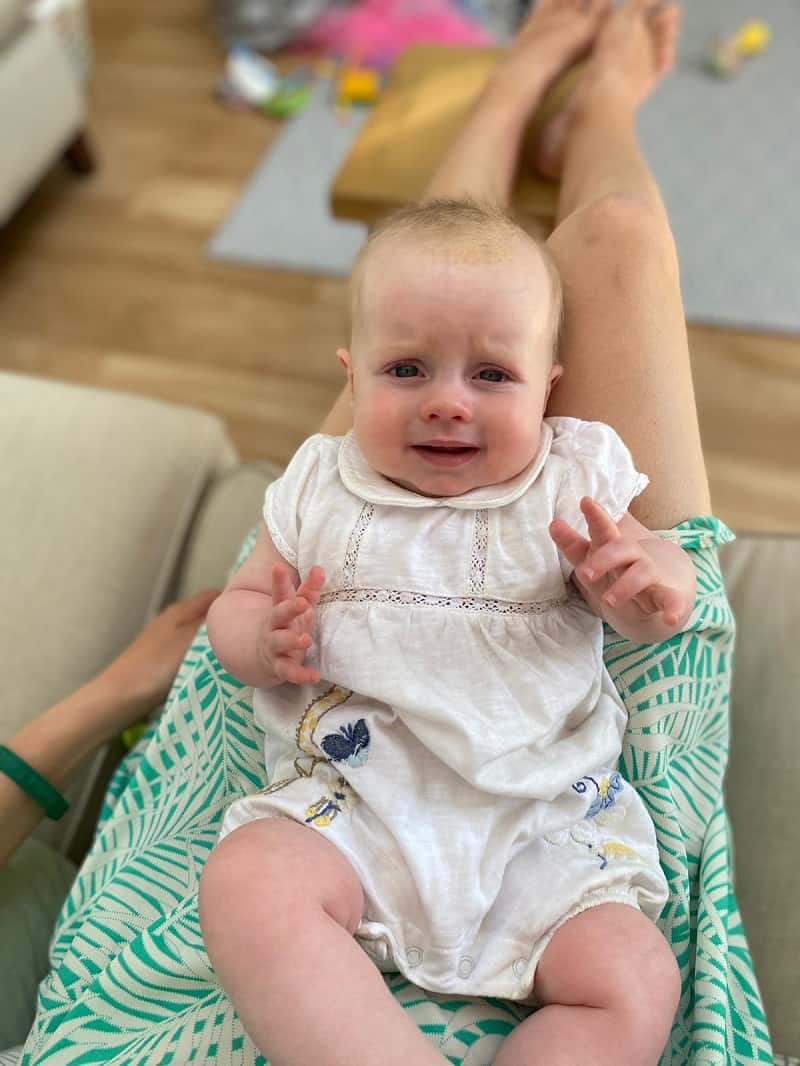
#2 Lap hold
When you get weary of holding your newborn because you’ve been holding her all. Day. Long. You need to know how to hold a newborn with the lap hold. It’s also a lovely way to engage and interact with your newborn. In the early days, your newborn will love just looking at your face but in no time at all, you’ll be chatting away to each – baby talk of course!
So for the lap hold, sit with your legs pressed together and on a slight incline. The easiest way to do this is to rest your feet on a coffee table so that your legs are bent.
Lay your newborn on her back with her head resting near your knees, bottom and feet against your belly. Take one hand and place it on the back of the baby’s head. If necessary, you can place your other hand on the side of their belly for support.
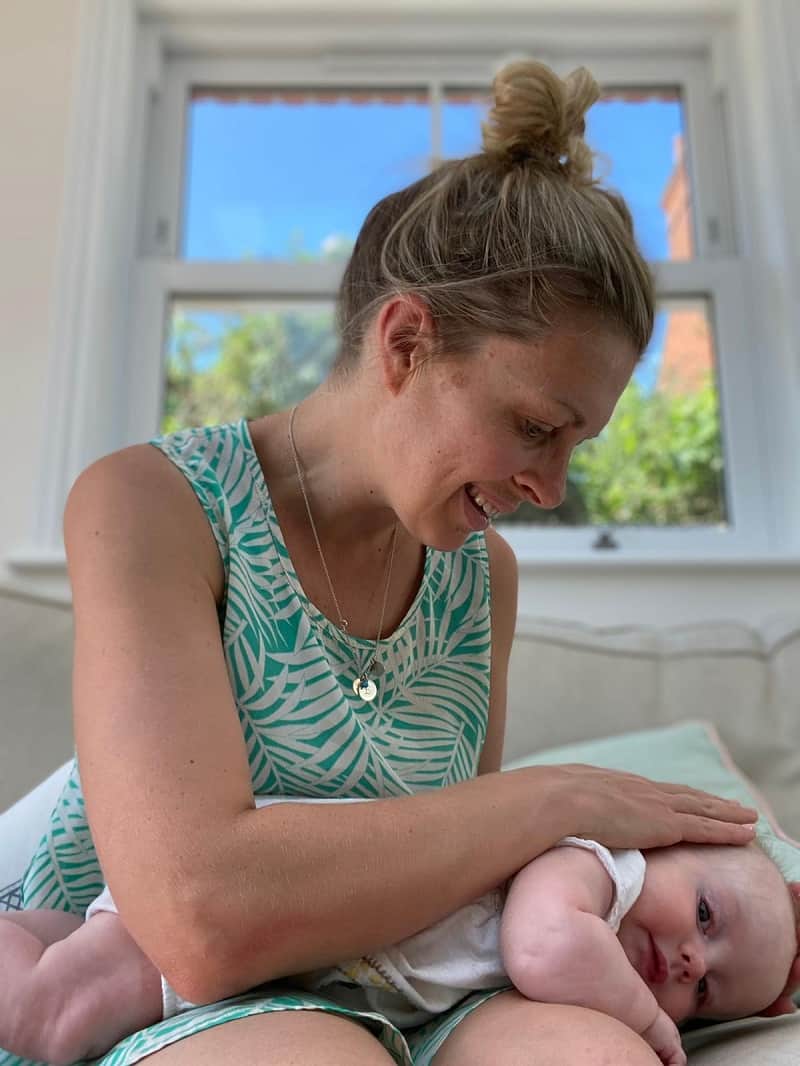
#3 Cross-lap belly-hold
It’s a bit like tummy time but on your lap, since you’ll likely find your little one trying to lift her head and look around.
Sit with your legs together and flat, or flatish. Lie your baby on her tummy from left to right or right to left. Let her legs hang down on the one side and support her head and neck with your hand on the other side.
The cross lap belly-hold is good for fussy, gassy babies who are always more comfortable on their front.
How to hold a newborn – while standing
While it’s definitely a good idea to start by learning how to hold a newborn sitting down, there are going to be numerous occasions when you’re going to want to be standing up. With practice and confidence in sitting-down holds, holding a newborn while standing up won’t feel as daunting as it may sound now.
It then allows you the freedom to move around while holding a newborn – which you’re going to want if the newborn in question is your own.
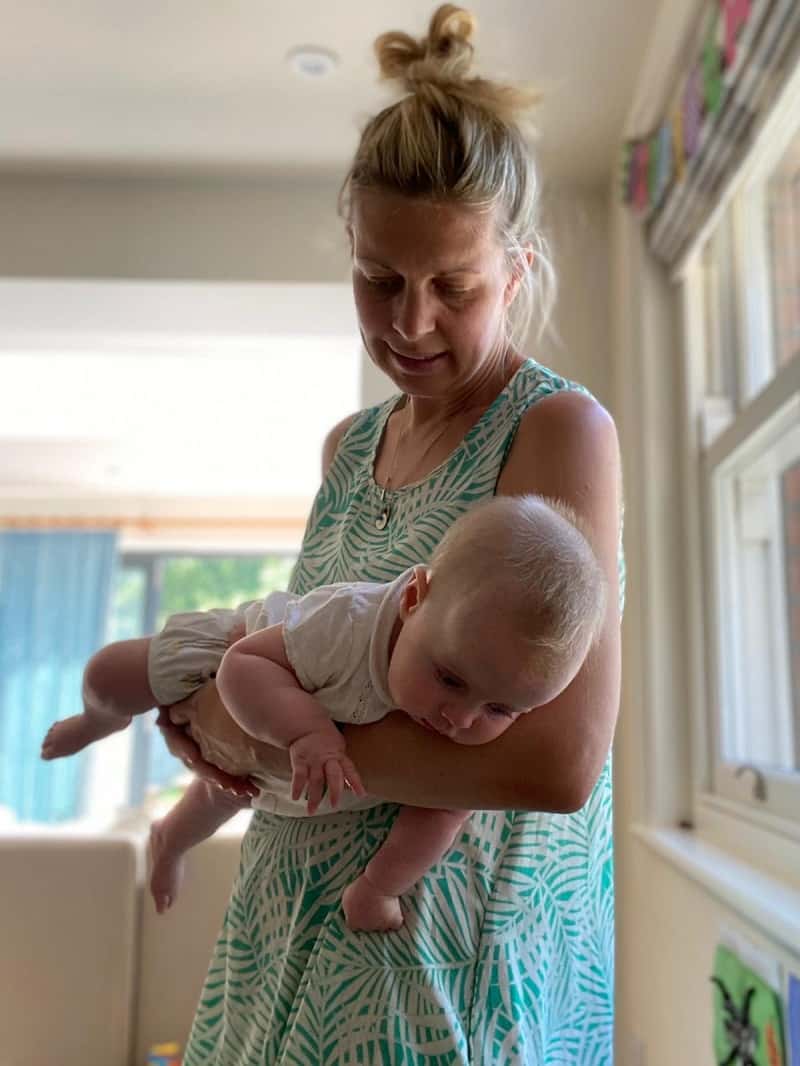
#4 Belly-hold, also called the “colic carry” or “tiger in a tree”
Lie baby with her tummy along your forearm, with her head at the elbow end and your hand cupped under the diaper, effectively holding her crotch. This will feel very secure for you and it’s also very comfortable for baby.
This is the best position to hold a fussy, gassy baby in, hence it’s also called the “colic carry”.
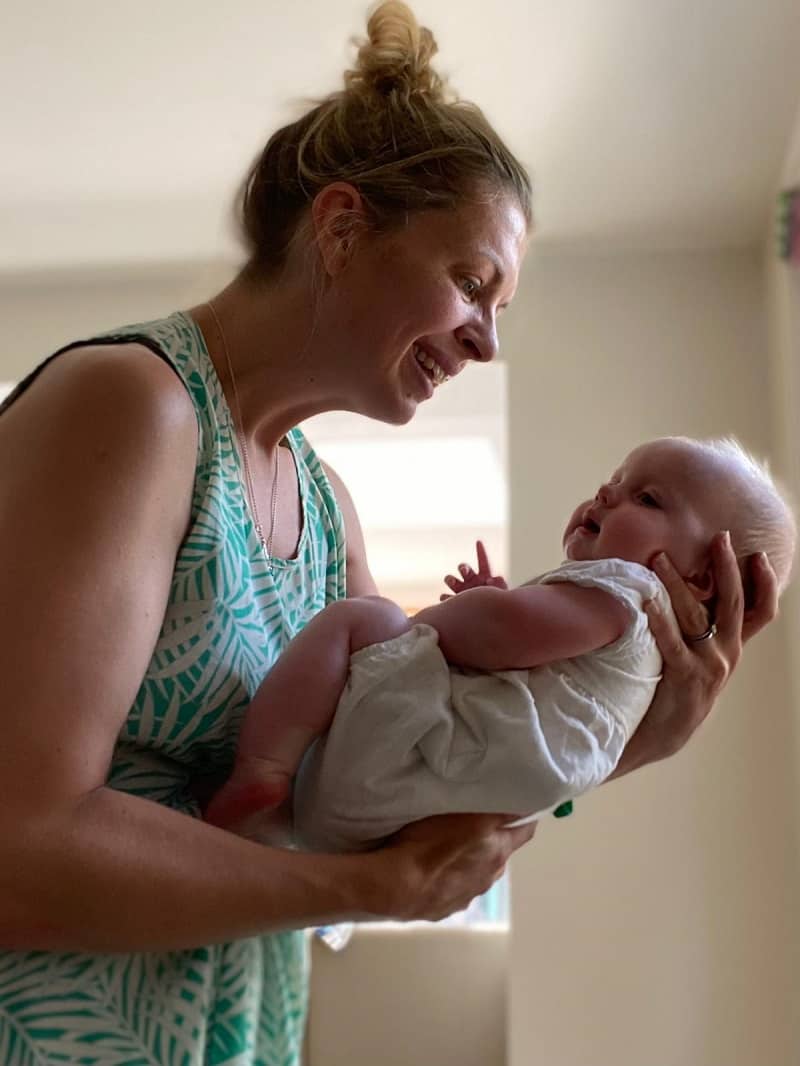
#5 Transfer hold
Holding a newborn in the transfer hold is similar to the lap hold, but this time you’re standing up. Your baby will end up facing you, so another one that’s good for gazing at each other or a little chat. Called the “transfer” hold because you’ll find yourself using it for all those baby maneuvers – from cot to changing mat, from changing mat to tub and so on.
Support your baby’s head and neck in the palm of your hand, with the top of her back lying along your forearm on an incline. Place your other hand under her bottom.
When is it ok to hold a newborn upright?
You can hold your newborn upright from birth as long as the neck and head are well-supported. In fact, sometimes it’s preferable to hold your newborn upright rather than have her lying down. It’s certainly not bad to sit baby upright.
Holding a newborn upright is often a good position for burping, allowing trapped wind to be passed easily. It can also help a gassy baby feel more comfortable while waiting for those air bubbles to pass, plus it can relieve any congestion.
In an upright position, baby is also able to see what’s going on around her; there will be so much for those little eyes and that growing mind to be entertained by. So, plenty of reasons, to learn how to hold a newborn upright.
How to safely hold a newborn upright
Just like when holding or handling a newborn in any other position, supporting the head and neck is the most important aspect, along with ensuring there’s no chance you’re going to drop baby.
Of course, the more vertical you hold baby, the more attention you need to pay to supporting the head and neck, so take extra care.
How to hold a newborn upright while sitting
If you want to hold a newborn upright, you can simply increase the incline of some of the other hold positions. This is easily done for the following holds:
- the cradle hold
- lap hold
Each can simply be adapted so that you’re holding baby in a more vertical position.
But here are some alternatives that automatically put baby more upright.

#6 The newborn shoulder hold
Wondering how to hold a newborn over your shoulder? Then you’re talking about the newborn shoulder hold, best for burping and can be used both standing or sitting.
Simply, lie your newborn on one of your shoulders with her belly resting against your chest. Use the crook of your arm to support her bottom and offer more support to the head with your opposite hand.
The shoulder hold is a popular position for burping because it’s so effective. In this position, gentle pressure is applied to baby’s abdomen, gently squeezing air up and out.

#7 The chair hold
In this position, your body becomes the chair that your newborn sits in.
So, sitting comfortably on a chair yourself, have baby in a sitting position, back to your tummy, so she’s facing out to the world around her. When teeny tiny, you need to be a fairly well-reclined chair and/or support her head with one of your hands.
Over time you can become more upright, supporting the head and neck as if necessary.

#8 The sitting on knee hold (for want of a much better description)
You sit normally, with your newborn in a sitting position, facing either to the left or right with bottom on your thigh and her legs dangling over. Have one hand cupping her chin to support her head and neck and the other hand holding her back to keep that sitting position.
Learning how to hold a newborn upright in this position is worthwhile for burping.
How to hold a newborn upright – while standing
The newborn shoulder hold works just as well standing as when sitting – see details above. You can also try the transfer hold, but holding your newborn more vertically.
But one new position that you may find useful.

#9 The outward-facing crotch hold
This one is for the older newborn with good head and neck control as it’s difficult to offer extra support. It allows you to hold your newborn with one hand, leaving the other free to do ALL the things that get left undone for so long when you’re in that busy newborn phase.
In this position your baby is facing out and free to have a good look around. Her back is against your side with your arm from the same side, over her body reaching down. Cup your hand over her diaper so you’re supporting your newborn’s body weight from the crotch, with the legs dangling.
How to hold a newborn after feeding
It’s a good idea to hold your newborn upright after eating, especially if they are prone to a lot of spit-up or suffer from acid reflux. If your newborn guzzles milk down and becomes very full, holding her upright helps that milk stay down.
Spit-up is very common; newborns are gassy little things by nature and it’s normal for bubbles of air get trapped in the stomach during a feed.
(If you’re baby is particularly gassy this post will be worth a read: Got a gassy baby? 16 Common causes & remedies to fix them for good)
By holding your baby upright you’re giving those air bubbles chance to escape, through burping, with as little spit-up as possible. Let’s face it, whether you’re feeding by breast or bottle, it’s hard work – you want that milk to stay where it belongs (and not create extra laundry!).
Since holding your newborn upright after feeding is such an effective way to burp your baby (you absolutely MUST burp baby after eating, as well as at some point during), it is often recommended.
Do I have to hold my newborn upright after feeding?
It’s not essential to hold a newborn upright after eating, only recommended. All newborns are different; some may be able to lie down shortly after a feed, no problem at all but for most this will likely cause discomfort. Any trapped wind will stay trapped and be pushed down into the lower gut causing pain and more discomfort.
How long should you hold a baby upright after feeding?
Again, all babies are different. As a rule of thumb, aim to hold a newborn upright for 15 minutes after eating. During this time you want to get a good few burps out.
According to Philippa Murphy, who’s done a wealth of research into the digestive biology of infants and is the founder of BabyCues you want to aim for the following number of burps during/after a feed (i.e, these numbers include the burp break mid-feed):
- 0 to 2 weeks: minimum of 10 burps
- 2 to 6 weeks: minimum of 10 burps but aim for 20
- 6 to 12 weeks: minimum of 15 burps but aim for 25
You may want to hold your newborn upright for longer if your baby is particularly gassy, spits up a lot or suffers from acid reflux. Or your newborn may find some of the other positions more comfortable. It’s just trial and error.
The best positions to hold a newborn in for burping
Any upright position will help a newborn burp, but some are better than others. What you’re looking for is a position that places gentle pressure on the lower abdomen, which helps squeeze air bubbles up and out.
These upright newborn hold positions work well:

The newborn shoulder hold
If you get the angle just right, your shoulder applies that gentle squeeze on baby’s abdomen. In addition, you can help the process along by gently rubbing baby’s back in smooth circular movements. Rub, rather than pat.

The sitting on knee hold
My babies always burped will in this position. To recap this hold, which is described above:
- sit in a chair, with your newborn in a sitting position, facing either to the left or right
- her bottom will be on your thigh with legs dangling over
- have one hand cupping her chin to support her head and neck and the other hand holding her back to keep that sitting position
So the hand on the back can rub gently to help those burps out.
The hand can lift the chin up a little to keep ensure there’s plenty of room through the throat to allow air bubbles to pass.
You can then gently pivot baby in circular motions which puts that gentle pressure on the abdomen, encouraging those burps.
Much better demonstrated by a video:
How to hold a newborn to calm and soothe
There are soooo many things that can upset a newborn – overtiredness and overstimulation are often the culprit and a gassy baby will also need calming and soothing. So you need to know how to hold a newborn to stop crying. Learning which positions are particularly comfortable and soothing will pay dividends.
In general, front-lying positions are more comfortable as they reduce the painful pressure that air bubbles create, if this is the cause of discomfort. Due to the abdominal pressure that these holds create, they’re also good at squeezing any remaining trapped wind out.
Even if gas pain isn’t the issue, front-lying positions tend to be closer to how your baby was lying the womb – and anything you do that mimics the environment of the womb will help your newborn stop crying.
Swaddling is an incredibly effective way to replicate the cacooning effect of the womb and can calm and soothe in an instant. Not only that, a good swaddling technique can help your newborn stay asleep for longer. Not sure how to swaddle? Baby hates the swaddle? Baby keeps breaking out of the swaddle? Try this free swaddle guide:
So, if you want to know how to hold a newborn to calm and soothe her, these are the ones to try:
Belly hold, also called the “colic carry” or “tiger in a tree”
This hold is often called the “colic carry” because it’s so good at calming a baby suffering from colic.
(If you think you’re baby has colic and are at your witts end, fear not. there’s normally always something you can do to improve, reduce or even eliminate colic. Check this post out: Colic: what is it; is crying really inconsolable? Plus causes & remedies – yes, there ARE some)
In addition to the front-lying position that a gassy, colicky baby will find comfortable, the colic carry allows you to move around a little; baby will also find the movement calming and soothing.
Cross-lap belly hold
Similar to the above, baby is front-lying with pressure on the abdomen helping any last air bubble to be squeezed out, but allows you to take a break!
Can newborns be propped up?
According to the AAP, babies should not be propped up or sleep on an incline, but while awake and supervised, using baby equipment and baby carriers is another way to keep your baby upright.
Babies should always be placed on a firm, flat surface on their backs to sleep. Unfortunately, this is quite an unnatural position for a newborn to sleep in and if your baby suffers from acid reflux or is particularly gassy, you’re likely to find sleep a struggle. Unfortunately, propping your newborn up is not an option. But there are other options, many of which were a lifesaver with my reflux baby.
Check out: The scoop on REFLUX REMEDIES: natural remedies, over-the-counter ones; prescribed medications
Instead of propping your newborn up, there are a number of gadgets to safely hold her upright or a small incline, but still leave you hands-free… coming up next.
Ways to safely hold your newborn upright – hands-free
BY BABYWEARING
When still small and unable to support her head and neck, babywearing is a great way to hold your baby upright. Not only is this good to allow those last burps to escape post-eating, newborns just love the skin-to-skin contact, often called “kangaroo care”. Being close to you and your familiar smell, warm and tightly held against you is not dissimilar to many of the sensations your baby would have experienced in the womb.
Swaddling is an effective soother and settler for sleep for similar reasons – get your hands on our free swaddle course right here.
WITH A BABY BOUNCER
Try a baby bouncer designed for tiny babies as well as bigger ones – it should say from what age it’s suitable. Most don’t provide nearly enough support for the head and neck and are really only suitable from 8 weeks. If used to early, you’ll find your newborn slumps in it; not good for her head and neck.
Having had this issue first time around with my son, I came across this far superior baby bouncer from Tiny Love, which is very sturdy and supporting, and grows with your newborn. When teeny tiny, the incline is only slight but as her head and neck get stronger you can position baby a little more upright.
IN AN INFANT SEAT
When a little older (around 12 weeks plus), an infant seat, such as a Bumbo is a worthy investment. It has a very supportive upright seat, so great when baby wants to sit but can’t quite do it unaided, but we’re getting ahead of ourselves – if you want to hold a newborn upright unaided, this won’t yet be suitable.
How long should you hold a newborn baby?
It’s thankfully an outdated concept that holding a baby too much will make their body sore or “spoil” them. You can’t. So there’s just no such thing as holding a baby too much.
If your baby is fussing, you can cradle and cuddle and hold them to calm and soothe them. Your baby needs you, and your arms are a safe and comfortable place in a new and scary world.
Holding your newborn will help her form a solid attachment to you, in fact, it’s a wonderful chance to bond for the both of you.
Is there a wrong way to hold a newborn?
Honestly, as long as baby’s head and neck are supported, you can’t really hold a baby wrong. There is no perfect or right way to hold your baby; the above newborn hold positions are just some of the more common ones and ones which I personally found useful.
Your baby may let you know when they do not like a particular holding position by fussing and squirming, but as long as their body weight, head and neck are supported you are holding your baby just fine.
Similarly, there may be certain hold positions that you just gravitate towards due to comfort and practicality. Try them all and see what’s the best fit for the both of you.
Holding a newborn might feel like a challenge but there’s really only one box to tick
Yup, it’s to ensure baby’s head and neck are well supported. Other than that you need to be in a comfortable and secure position.
You don’t have to be afraid of holding a newborn. Hopefully, this post will give you the confidence to try it along with plenty of different hold positions to try. Good luck!





